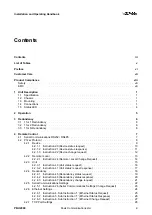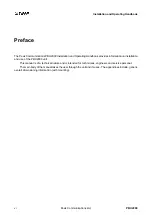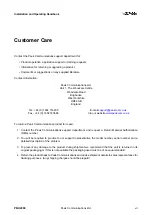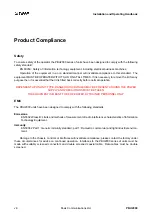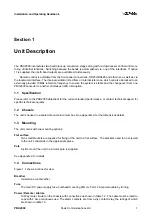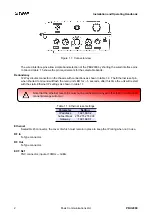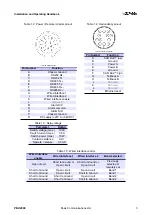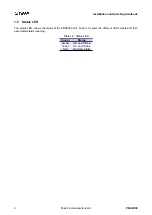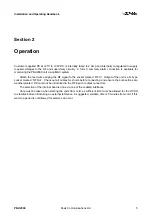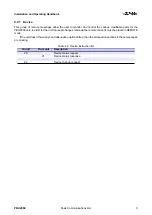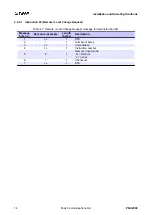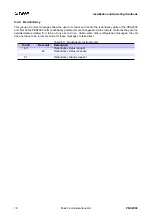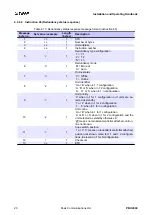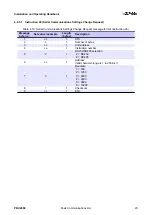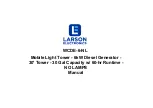
Installation and Operating Handbook
4.2
P7xxx Protocol
The PBU2000 transmits and receives data serially in an asynchronous format using the ASCII character set
(includes the extended ASCII set). The serial data consists of message frames composed of the following
message characters:
STX, number of bytes, unit address, instruction number, message body, checksum, ETX.
All characters are compulsory except for the message body. The presence of a message body is deter
mined by the message type (instruction number). The total number of message characters in a message frame
may range from a minimum of 6 to a maximum of 255. All messages to and from the unit follow the protocol,
as described in table 4.1, with a character format of 8 data bits, one stop bit, no parity, baud rate selectable.
Note that all numeric values are shown as decimal unless otherwise stated.
Table 4.1: P7xxx protocol
Message
byte no.
Set value / example
Length
(bytes)
Description
1
02
1
STX
Start of message character #02
2
n
1
Number of bytes
Character defining how many characters are in the
message including the STX & ETX parts
3
32
1
Unit address
Address ranges from character 001 to 255 (decimal)
4
21
1
Instruction number
Used to specify the type of message to or from the
unit
...
...
...
Message body
This is an optional set of data that is used in con
junction with the instruction type. It can be 0 bytes
in length upwards, all subject to the instruction num
ber
n1
?
1
Checksum
The checksum is used to verify the accuracy of the
message frame. The checksum is defined as the
summation of all the bytes in the message, begin
ning with the 3rd byte (Unit address) and extending
through the body of the message, ending with the
last byte before the checksum. The total of the bytes
is then ANDed with 255 so that the checksum is trun
cated to a single byte
n
03
1
ETX
End of transmission character #03
8
Peak Communications Ltd.
PBU2000
Summary of Contents for PBU2000
Page 2: ......


